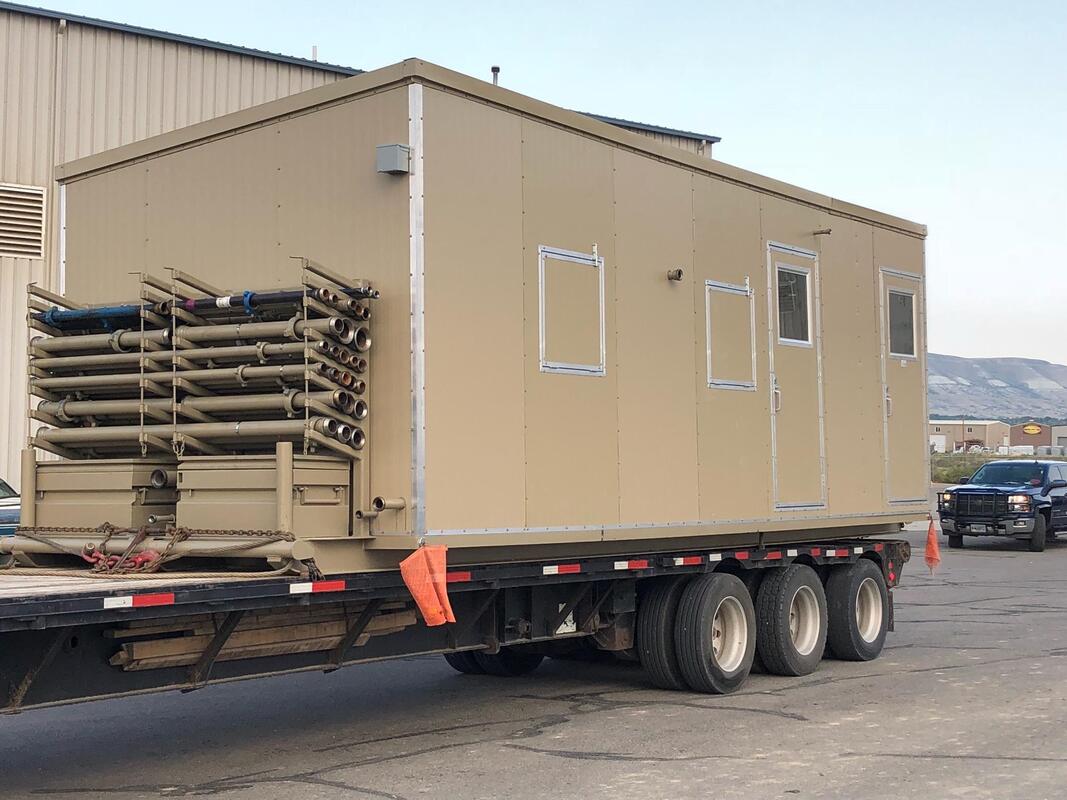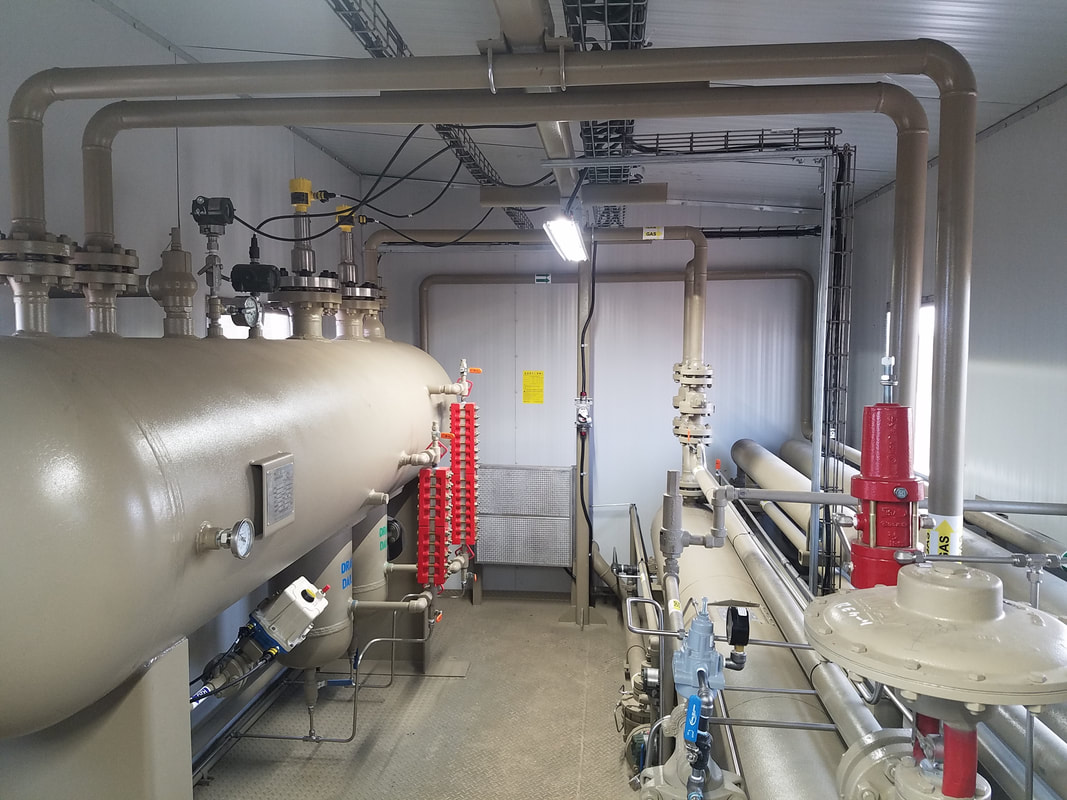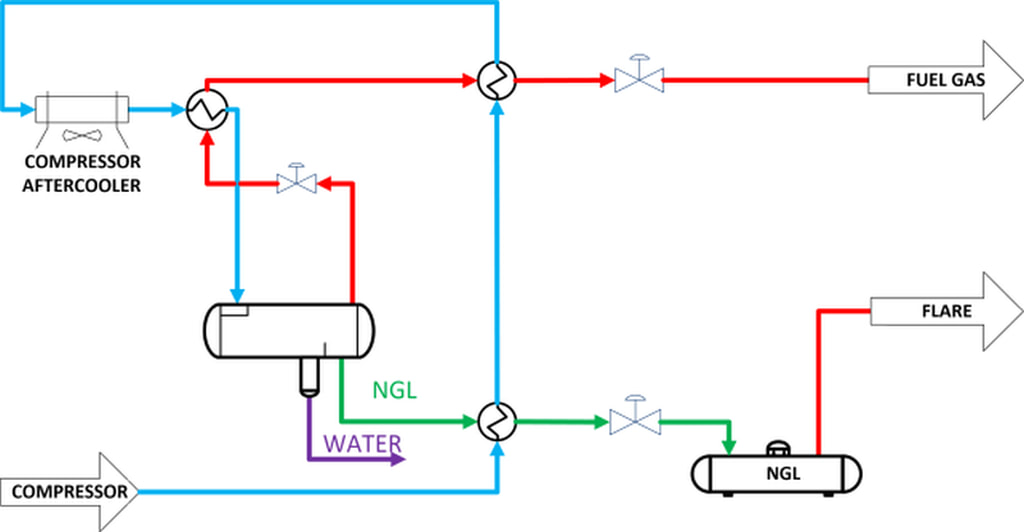NGL PRO
|
Aspen Engineering Services offers a cost-effective solution for flare gas capture, gas conditioning and NGL recovery. The NGL Pro process integrates dehydration, compression, cooling and conditioning, eliminating the need for costly glycol and refrigeration systems. Hydrate formation is precluded by a heat integration system. Consequently, no antifreeze additives are required.
NGL Pro is a field-proven and commercially available. All units are supplied with telemetry for remote monitoring from a computer or phone. Sites that can consume the residue gas for power will eliminate flaring completely. |
NGL Pro is a patented process.
|
NGL Pro Process Description
The NGL Pro system will consist of two portable skids that are transported over the highway on flatbed trucks. One skid contains a standard reciprocal compressor package. The other skid contains the proprietary NGL Pro process. The prefabricated equipment will be set near the wellhead and field connected. The NGL Pro process is comprised of the following steps:
|



